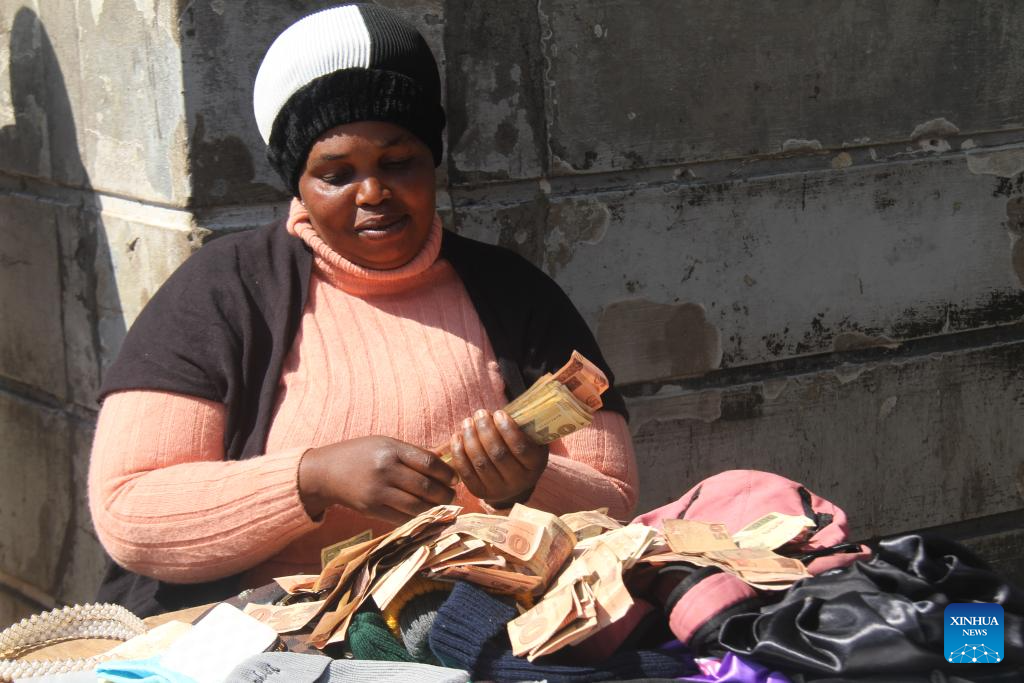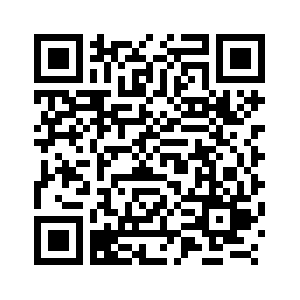
A woman counts Zimbabwe dollar notes in central Harare, Zimbabwe, July 22, 2023. The Zimbabwean dollar continued to gain ground following government measures aimed at stabilizing foreign exchange rate and curbing a freefall that had resulted in soaring prices.(Xinhua/Tafara Mugwara)
by Tafara Mugwara
HARARE, July 28 (Xinhua) -- The Zimbabwean dollar continued to gain ground following government measures aimed at stabilizing foreign exchange rate and curbing a freefall that had resulted in soaring prices.
The currency traded at 4,517 Zimbabwean dollars per U.S. dollar on wholesale foreign exchange auction Thursday, up from 6,713 per U.S. dollar recorded on June 16, central bank figures showed.
After experiencing exchange rate volatility between April and June, the Zimbabwean government implemented policy measures to stabilize the rate, including a directive for import duties to be paid in Zimbabwean dollars, except for luxury items.
At the same time, a directive for government institutions to collect charges in the local currency and a requirement that 50 percent of the foreign currency portion of corporate tax payments must be in the local currency were also made.
"We are witnessing the effects of these measures which were put forward by authorities, and these measures have actually managed to mop excess liquidity which was existing in the economy," economic analyst Zvikomborero Sibanda told Xinhua in a recent interview.
"Considering where we are coming from, what's happening right now is actually good, especially to formal enterprises because once the ZimDollar is stable, it actually brings predictability to businesses," said Sibanda.
While the exchange rate plunged in previous months, prices rose sharply. Inflation meant that people had to get rid of the local dollar as soon as they got hold of it for fear of depreciation.
For the month of July, inflation fell to 15.3 percent from 74.5 percent in the previous month, according to statistics released by statistics agency ZIMSTAT on Monday.
For now, Zimbabweans say they can hold on to their hard earned cash for much longer, provided that the current stability persists.
"With this improvement in the stability of our local currency, it has also lessened the pressure for one to change their money in order to preserve the value of their local currency," said Lucy Kuwengwa, a local resident.
Her sentiments were shared by Samuel Pfani, a street vendor in central Harare.
"We can now confidently use our local currency. We had to exchange it for U.S. dollars but now we can make payments directly because rates have stabilized," he said.
While a stabler local currency is a positive development to the transacting public, Sibanda said for the local dollar to maintain stability, authorities need to adhere to fiscal and monetary discipline.
Although the currency is firming up, the U.S. dollar remains the preferred medium of exchange.
Denford Mutashu, president of the Confederation of Zimbabwe Retailers, said the government should take lead in creating confidence in the local dollar.
"The government must lead in creating demand for the local currency, and then the private sector and individuals, the members of the public can also follow suit. Now, there is huge demand for the local Zimbabwean dollar," Mutashu told Xinhua in a recent interview.
The Zimbabwean dollar has a turbulent history. It was abandoned in 2009 when inflation reached historical levels and a multicurrency regime was adopted. The government in June 2019 removed the multicurrency regime and re-introduced the Zimbabwe dollar as the sole legal tender.
In March 2020, however, the government allowed people with free funds to use their foreign currency to pay for goods and services for easier transactions following the outbreak of COVID-19.
The use of the U.S. dollar has since grown in the economy, with more than 70 percent of expenditure denominated in U.S. dollars. ■



